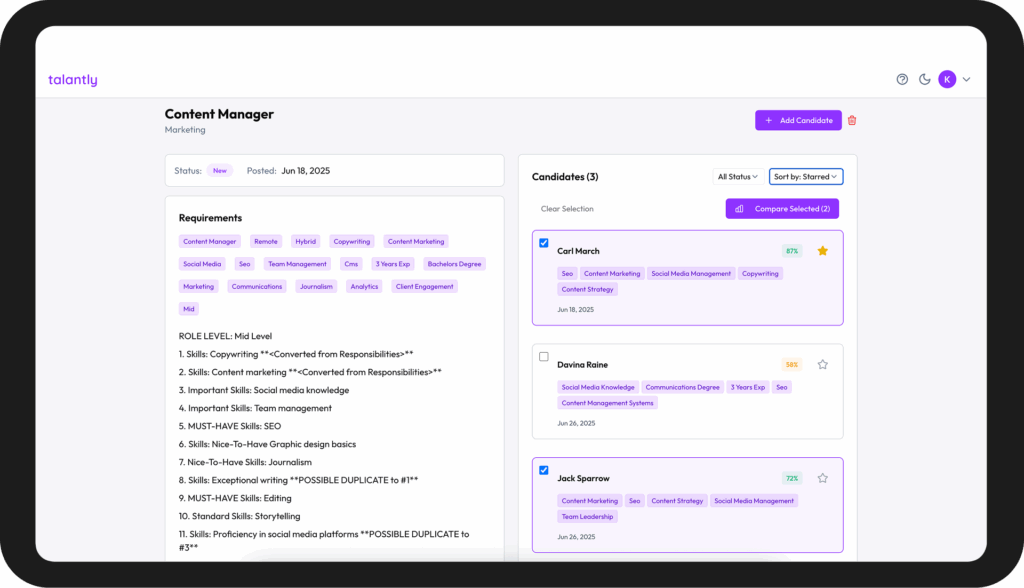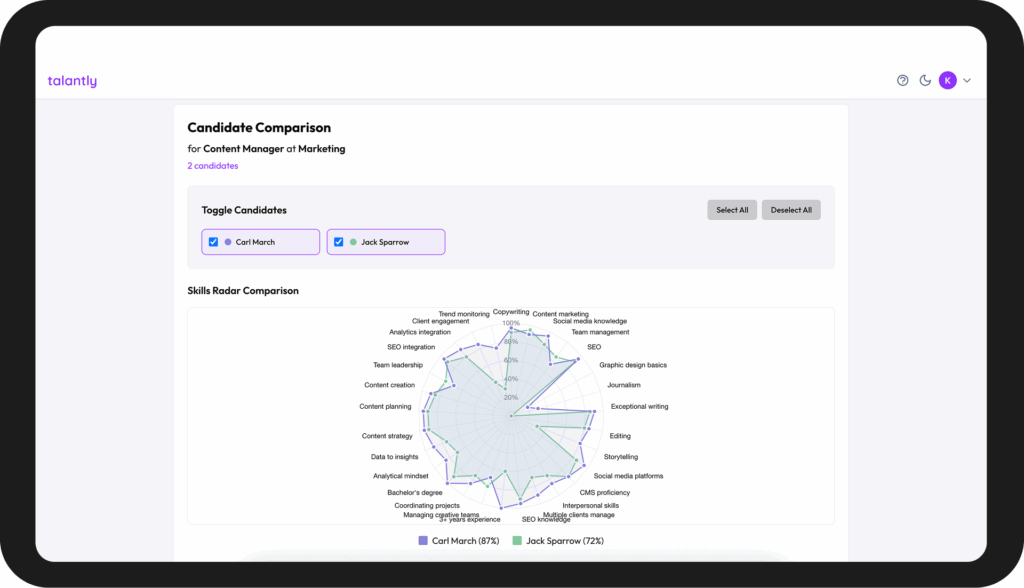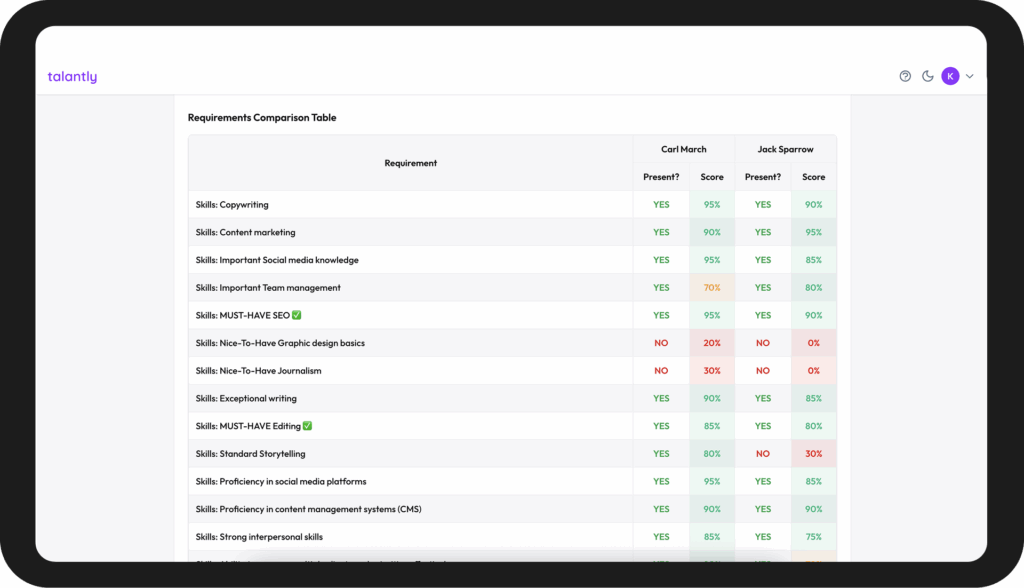Choosing the right person for the job often means deciding between two perfectly good candidates with a slightly different skillset in terms of proficiency and skills themselves. It is crucial to understand what your priorities are and how well candidates meet them. Hence, candidate comparison can make up a great portion of the hiring process. But how do you compare job candidates? In part VII of efficient hiring, we are going to talk about candidate comparison.
How to compare objectively?
It is no news that people evaluate other people based on their inner biases and beliefs. The situation becomes even more critical when it comes to comparing two candidates that has already been through the most stages of the hiring process. Personal preference towards one candidate due to their charisma can undermine the whole process.
What is the solution? The best way of assessing candidates for the job is to do so using the written list of objective requirements, set in the early stages of the hiring process. The good news is that this process does not require much extra work, as those objective requirements can be extracted from the job description.
Creating a written candidate comparison template based on the requirements can help later in the selection process, as it will not be influenced by any of the biases that start with the first CVs and interviews.
Talantly.ai’s candidate comparison chart
Talanatly.ai has a built-in feature that allows recruiters to evaluate candidates in comparison with each other. To access the chart, go to the vacancy menu and select the candidates you would like to compare. Then, click “Compare Selected.” You may need to wait a few seconds for it to generate.

We’ve already discussed the importance of objective, competitive criteria when comparing candidates. So, what criteria is used by Talantly? For best results, the system uses requirements generated during the vacancy creation stage. Candides will be assessed by every single skill, knowledge, education, or ethics point, similarly to how it is in a CV evaluation.
Then, a spider chart and a candidate comparison table are created, illustrating how fit they are for the role. Both the chart and the table work in a similar way, with one complementing the other.
Spider chart allows you to compare two or more candidates visually. Each axis represents a requirement with a score from 0% to 100%. The system analyzes the candidate’s CV and gives each skill a score, represented on the chart. This, in turn, creates a shape, showing how fit the candidate is for the role. The more area is covered, the more fitting this person is for the role.

A spider chart is great for initial comparison, as it is easy to understand the candidates visually. However, candidate comparison does not end at an eye’s glance. Making a good hire means thoroughly analysing every candidate and their fit for the job. For that purpose, Talantly offers a candidate comparison table.
It provides information about each candidate in two different aspects: whether the skill is present in the supporting documents, and the skill’s score from 0 to 100%. This table is more fitting for a deeper analysis, providing insight into each separate skill and allowing the recruiter to determine the candidate fit in a more analytical way.
At the end of each chart, you can see a final candidate score that corresponds to that on a candidate card.

Conclusion
Candidate evaluation becomes an easier task when the recruiter doesn’t have to worry about biases. Hence, a pre-made candidate comparison template for the vacancy is a must. However, this task can be even easier when there is an automated system that compares those candidates only based on their skills, leaving the evaluation for you.



